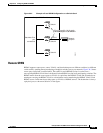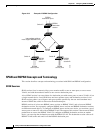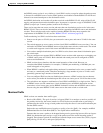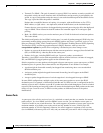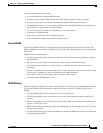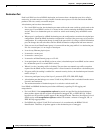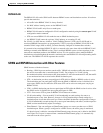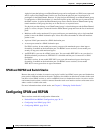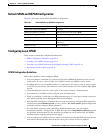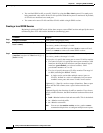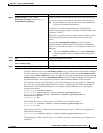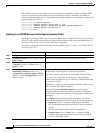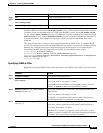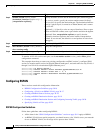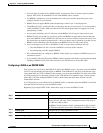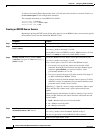
30-11
Catalyst 3750-E and 3560-E Switch Software Configuration Guide
OL-9775-02
Chapter 30 Configuring SPAN and RSPAN
Configuring SPAN and RSPAN
Default SPAN and RSPAN Configuration
Table 30-1 shows the default SPAN and RSPAN configuration.
Configuring Local SPAN
These sections contain this configuration information:
• SPAN Configuration Guidelines, page 30-11
• Creating a Local SPAN Session, page 30-12
• Creating a Local SPAN Session and Configuring Incoming Traffic, page 30-14
• Specifying VLANs to Filter, page 30-15
SPAN Configuration Guidelines
Follow these guidelines when configuring SPAN:
• You can configure a maximum of 2 source sessions and 64 RSPAN destination sessions on each
switch stack. A source session is either a local SPAN session or an RSPAN source session.
• For SPAN sources, you can monitor traffic for a single port or VLAN or a series or range of ports
or VLANs for each session. You cannot mix source ports and source VLANs within a single SPAN
session.
• The destination port cannot be a source port; a source port cannot be a destination port.
• You cannot have two SPAN sessions using the same destination port.
• When you configure a switch port as a SPAN destination port, it is no longer a normal switch port;
only monitored traffic passes through the SPAN destination port.
• Entering SPAN configuration commands does not remove previously configured SPAN parameters.
You must enter the no monitor session {session_number | all | local | remote} global configuration
command to delete configured SPAN parameters.
• For local SPAN, outgoing packets through the SPAN destination port carry the original
encapsulation headers—untagged, ISL, or IEEE 802.1Q—if the encapsulation replicate keywords
are specified. If the keywords are not specified, the packets are sent in native form. For RSPAN
destination ports, outgoing packets are not tagged.
• You can configure a disabled port to be a source or destination port, but the SPAN function does not
start until the destination port and at least one source port or source VLAN are enabled.
Table 30-1 Default SPAN and RSPAN Configuration
Feature Default Setting
SPAN state (SPAN and RSPAN) Disabled.
Source port traffic to monitor Both received and sent traffic (both).
Encapsulation type (destination port) Native form (untagged packets).
Ingress forwarding (destination port) Disabled
VLAN filtering On a trunk interface used as a source port, all VLANs are
monitored.
RSPAN VLANs None configured.



